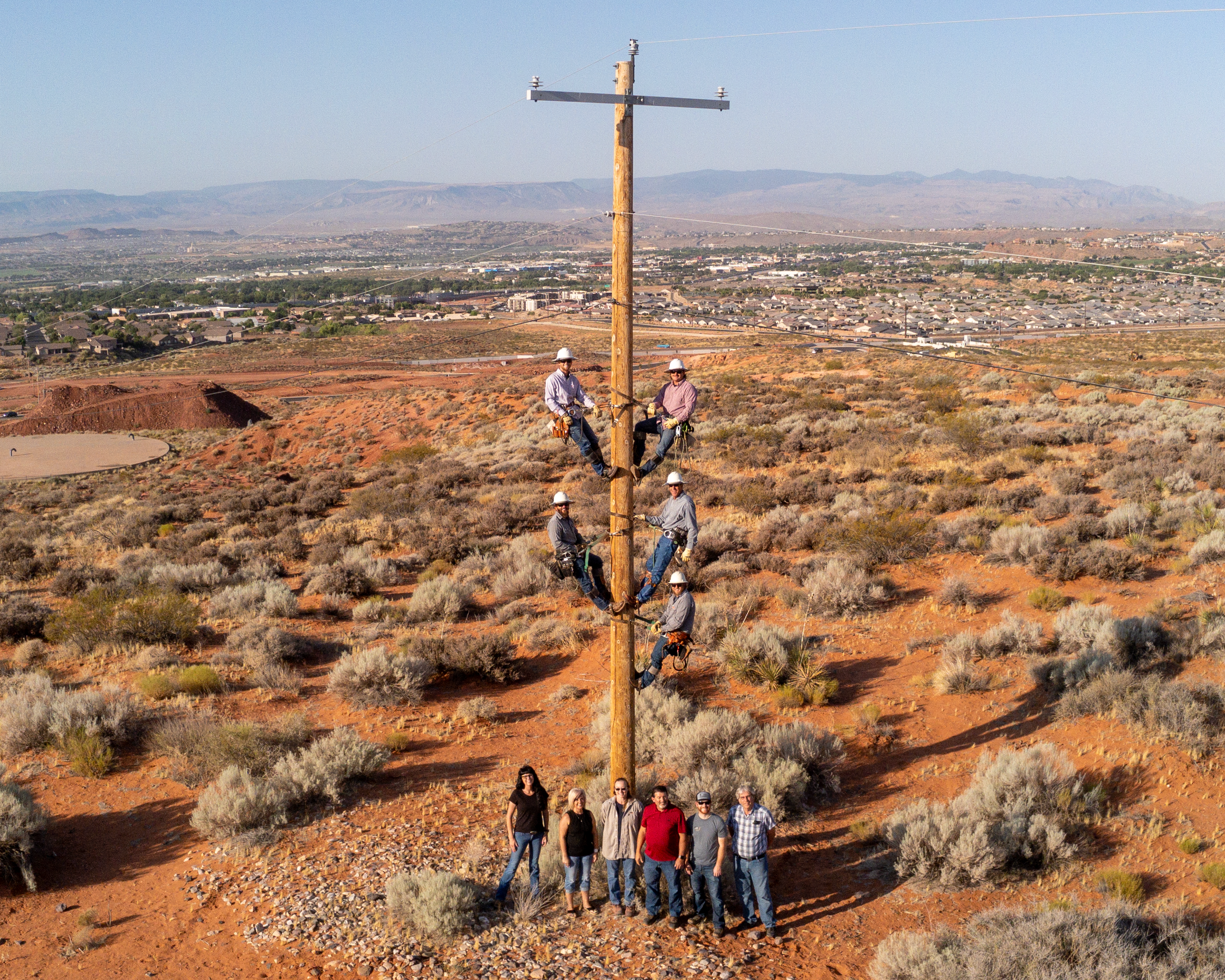| Population | 32,700 |
| Electric customers | 13,000 |
| Utility formed | 1988 |
| Utility employees | 13 |
Since acquiring its electric utility from an investor-owned utility four decades ago, Washington City, Utah has experienced significant growth. The community, which sits outside the city of St. George near the state’s southern border, is one of a handful that opted for public power when the IOU in the area was acquired by Utah Power in the late 1980s.
At the time, the electric service hadn’t been perceived in a favorable light, and the city’s load was about 3,600 kilowatts, said Rick Hansen, electric director for Washington City. He said the system has grown steadily, and while some years saw flat load, the utility has had some years of substantial load growth of 12% or more. The city’s demand is now just under 55 megawatts.
Hansen said that the city’s growth has been fueled by people choosing to retire to the community, which is not far from major national parks and monuments. He came to work in Washington City from a consulting firm about seven years ago, and agrees it is a nice place to retire. The desert climate means residents don’t see much snow and can enjoy hiking and a variety of outdoor activities year-round.
“It’s just a good place to work with good people, a good area with lots of things to do,” he said.
 While people increasingly find the area attractive, the growth does present challenges. Hansen noted how the traffic has worsened, and cost of living has increased, and his team has had its share of work in keeping up by adding substations and securing sufficient power supply.
While people increasingly find the area attractive, the growth does present challenges. Hansen noted how the traffic has worsened, and cost of living has increased, and his team has had its share of work in keeping up by adding substations and securing sufficient power supply.
For the latter, he said Washington City works closely with Utah Associated Municipal Power Systems, a wholesale joint action agency, to ensure the city has a sufficient and diverse supply mix. He said the city is currently looking into securing additional supply from “wind, solar, geothermal, natural gas — all of the above.”
Washington City also works closely with the other utilities within the broader area and county, which he said includes four public power utilities, two cooperatives, and an IOU.
“We work well with the other municipalities. If we have a bigger project and we need help, or vice versa, we’ll send a crew, share equipment and expertise where we can,” said Hansen.

Residents north of the river that bisects the city are served by the public power utility, and residents to the south are served by a coop. So, the utility’s 13,000 customers represent about half of everyone who lives in the city. Still, Hansen said the utility works well with the coop, although the sharing of resources isn’t as common as among the public power utilities.
“It’s really good for this area, we have a lot of non-IOUs, and we kind of stick together and help each other out.”
Perhaps this togetherness stems from the city’s founding, which was established by pioneers looking to grow cotton in the late 1800s.
That history stays alive in the city’s annual Cotton Days, which includes a parade, tractor pull, and a variety of other family-friendly events.
Hansen said the utility employees mainly stay focused on “keeping the lights on,” but do some outreach including safety demonstrations. Mostly, it’s the crews that are a visible reminder of how the utility works for the city.
“Overall, to help the community have a stable electric supply is what everybody strives to do. We have a great crew that responds quickly to any problems,” added Hansen.

